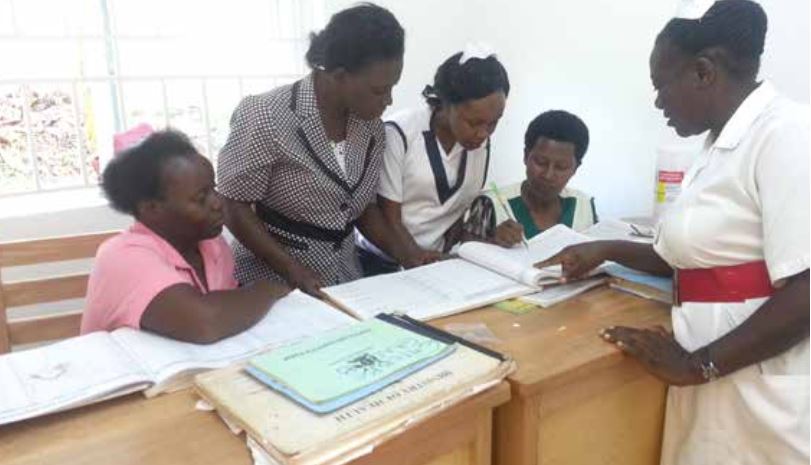 |
Susan Nakubulwa
|
ABOUT THE FELLOWSusan Nakubulwa holds a Master of Science degree and a post graduate diploma in Epidemiology from the University London, United Kingdom. She also holds a Bachelor of Science degree in Economics and Statistics from Makerere University, Uganda. From January 2016 to December 2017, Susan was an Epidemiology Fellow with the Uganda Public Health Fellowship Program and she was hosted by Mildmay Uganda. Before joining the fellowship program, Susan was a Data Manager in the statistics section at Medical Research Council (MRC)/ Uganda Virus Research Institute (UVRI), Uganda Research Unit on AIDS where she contributed to the conduct of HIV research studies for over seven years. Currently, she is a member of the Mildmay Uganda Research Ethics Committee where she contributes to the protection of rights, safety and welfare of human research subjects. She also contributes to Quality Improvement in health service delivery. From July to December 2017, she was the team leader of a Quality Improvement project to improve the recording of data for the weekly Short Message System (SMS) Option B+ reporting at Entebbe hospital, Wakiso District. Susan has excellent communication skills and contributes to the dissemination of program and research findings through oral presentations at conferences and writing of manuscripts for publication in peer reviewed journals. She is a member of the Next Generation Global Health Security Network East Africa Working Group and the National Rapid Response Team, Ministry of Health, Uganda. She has contributed to public health in Uganda through investigation of outbreaks for illnesses associated with poisonings, guinea worm and cholera, in order to identify control and prevention measures. In 2016, she led the Rapid Health Assessment of South Sudan Refugees in Uganda. Susan would like to conduct research and contribute to Global Health Security in her future career. She also has interest in contributing to the application of Implementation Science in HIV/AIDS program settings. Achievements at the host site
Program-specific achievementsLeadership
Field outbreak investigations
Surveillance
Quality Improvement
Communication
Policy briefs Wrote two policy briefs entitled “Strengthening the monitoring of Flower Farm activities in Uganda to protect the health of workers” and “Utilization of Comprehensive Health Promotion Packages Targeted for Refugees in Northern Uganda.” Newspaper articles
Summary of Epidemiological Study:Title: Report on “Factors associated with couple HIV counseling and testing among adults receiving HIV Voluntary Counseling and Testing Services at Mildmay Uganda, 2011 -2013” Introduction: Couple HIV Counseling and Testing (CHCT) is an approach that contributes to reducing the spread of HIV. In 2012, the World Health Organization rolled out guidelines for CHCT which highlighted some of the potential benefits of the approach as increased strength of the relationship, emotional support, better quality of life and increased uptake and adherence to antiretroviral therapy.In a systematic review on the effect of HIV testing and counselling on HIV acquisition in Sub-Saharan Africa, one of the findings was that testing with a partner was significantly protective for HIV acquisition and the trend was stronger among females than males, Incidence Rate Ratio, IRR 0.31 (95% CI: 0.19-0.48). Past studies have shown that the uptake of CHCT among health facilities in rural Uganda is at 34% and there is need to scale up the approach of CHCT in the country, given its potential benefits. Therefore, the objective of this study is to identify factors that are associated with CHCT in a routine Voluntary and Testing (VCT) semi-urban setting so that there is a contribution to the body of knowledge that can inform policy on the approaches to focus on in order enhance CHCT during VCT programming. Methods: The study design was a cross-sectional survey. We conducted secondary data analysis based on data for an earlier study for VCT surveillance for HIV – acquisition. We conducted descriptive data analysis to obtain the socio-demographic characteristics of the study participants and univariable data analyses to investigate the crude associations between CHCT and selected variables of interest. We used the likelihood ratio test for hypotheses testing and adjusted for confounding using logistic regression. Results: From 2011 to 2013, 12,233 individuals who accessed HIV VCT services at Mildmay Uganda were included in the VCT surveillance database. Of these, 98% (11,930/12,233) were aged 18 years and above and were included in this CHCT study, 43% (5,119/11,929) males and 57% (6,810/11,929) were females. Data on gender was missing for one participant. The CHCT data showed that, 90% (10,792/11,930) came alone and 9.5% (1,138/11,930) came as a couple. After adjusting for both age and education level which were considered as potential confounders, the factors which were associated with CHCT were living with sexual partner, adjusted Odds Ratio (aOR) 2.5, 95%CI 2.2-2.7,(p<0.001), having ever tested for HIV in the past, aOR 1.5, 95% CI 1.3- 1.7, (p<0.001). Participants who disclosed their HIV status to their sexual partners when they had their last HIV test were two times more likely to have come to the VCT site as a couple compared to those who had not disclosed the HIV status to their partners in the past, aOR 2.1(95%CI 1.8- 2.5), p<0.001. Conclusion and Recommendations: The study findings revealed that the main factors associated with CHCT were those which enhanced communication on VCT among couples. However, the uptake of CHCT was low thus there was the possibility of the lack of awareness of the benefits. There is need to scale up approaches that create awareness of the benefits of CHCT among clients attending routine VCT services in the country. Since there is evidence that communication on VCT among couples is a strong motivator for CHCT, the counselling approaches should be well utilized to emphasize the most appropriate approaches that can increase communication on HIV VCT among couples. There is need for further research in order to identify the barriers of CHCT. Lessons Learned
|
|
Sign in
Sign in
Recover your password.
A password will be e-mailed to you.

